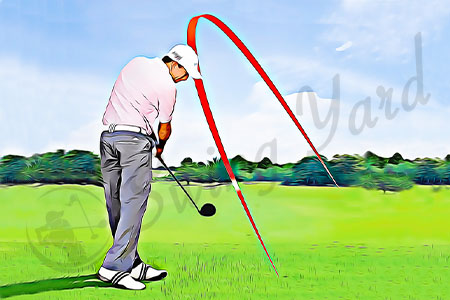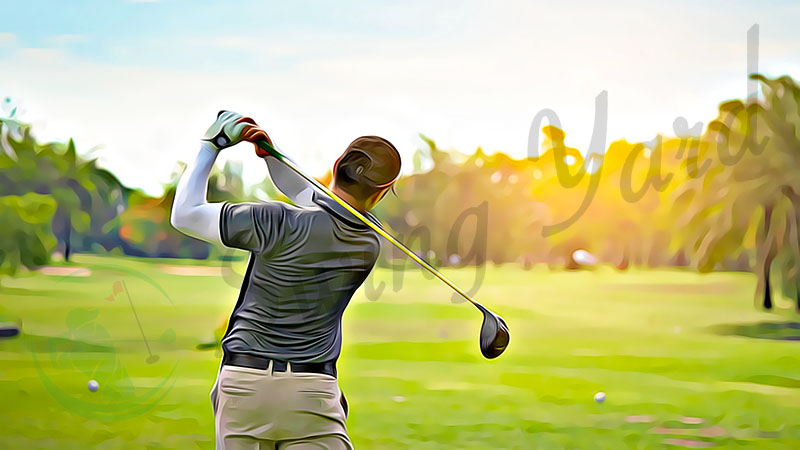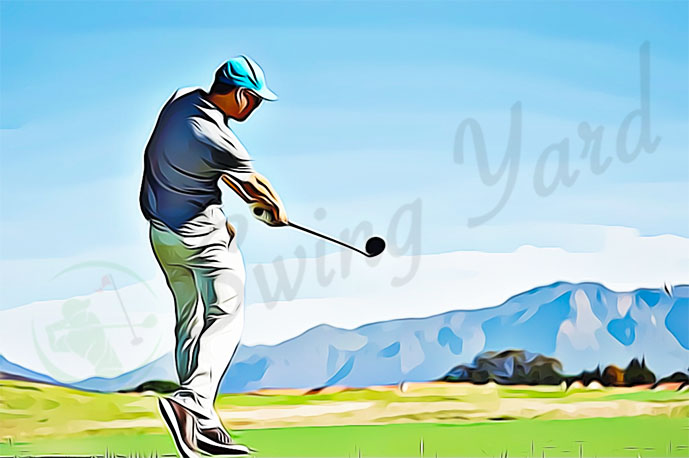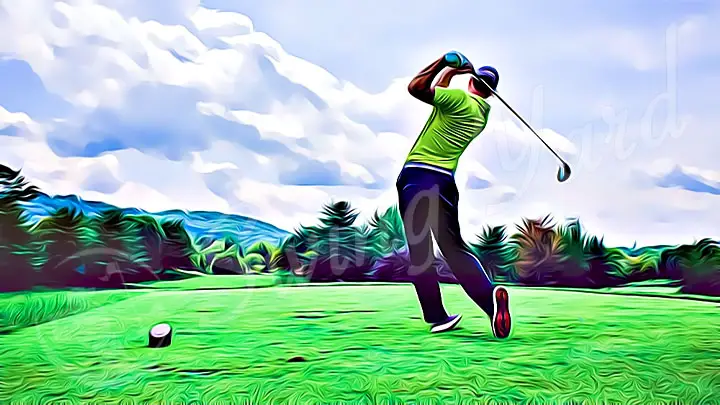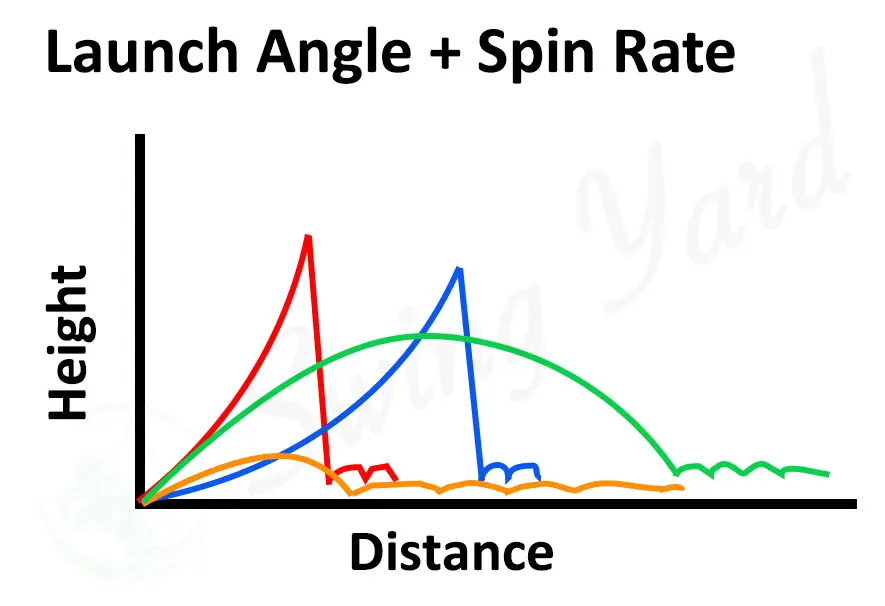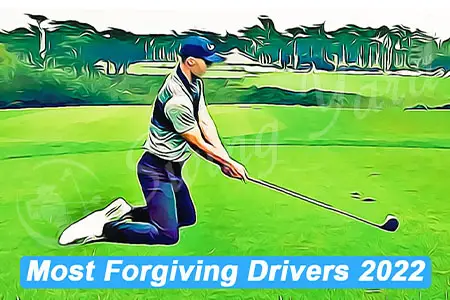Golf Slice Fix: How to Correct This Once and For All!
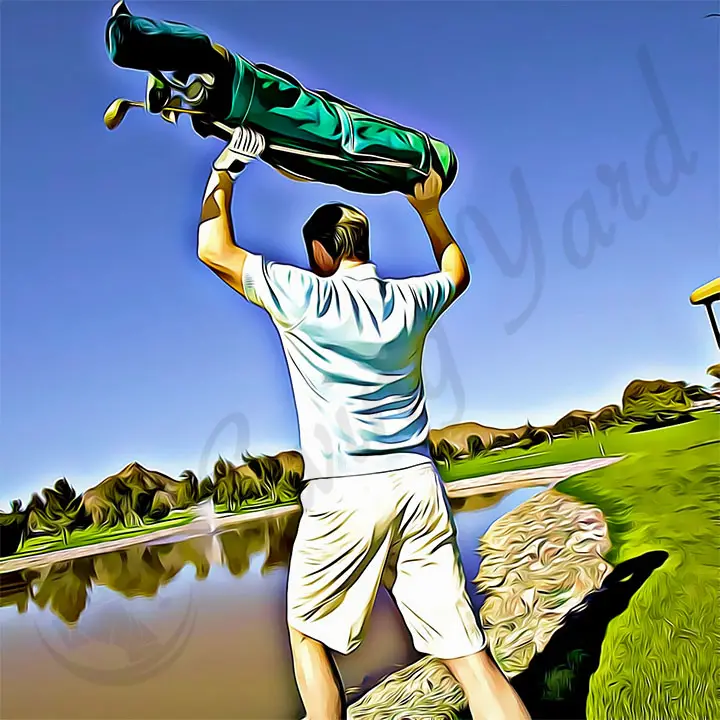
By Coach Erik Schjolberg – Jan 15, 2024
Contents
Key Takeaways
- A slice is a common problem off the tee for beginners and high handicappers
- Coming over the top, open club face, and ball too far back at address can cause a slice
- Outside to inside swing path applies a lot of side spin causing a slice
- Stronger grip will help close clubface at impact
- Move trail foot 3-6 inches back to force an inside swing path at takeaway
- Move ball position forward in your stance at address
- Make sure shoulders are closed to the target line
So you’re struggling with the almighty dreaded banana slice huh?
And you want to learn how to fix a slice once and for all right?
Well you’ve come to the right place… It’s really not that hard once you understand a few simple concepts.
So what happens when you slice the ball? Why is it so bad?
Well, typically your ball spins WAY off to the right (for the right-handed player) or left (for the left-handed player), and you’re inevitably in big trouble on the golf course… in the trees, the deep rough, a bunker, maybe in a penalty area, or worse… out of bounds.
Why does this happen? It could be a number of things (which I’ll cover in this article)… your swing path could be off and you’re coming over the top (sometimes called “casting”), your club face is open at impact, your body is out of sync with your swing, you’ve tee’d the ball too far back in your stance, or several other or even combined things in unison.
Unless you’re Bubba Watson, who is the ONLY golfer I know that can hit a 300+ yard drive with a 75+ yard slicing curve and still end up in the middle of the fairway, then you’re just going to be losing distance by slicing. Even if you simply “aim way left” and slice it back into the middle, that is not a fix!
And sure, you may hit some fairways here and there with that technique, but what usually happens when most amateur golfers hit a slice… the ball almost ALWAYS ends up where we don’t want it!
So let’s get this handled for you once and for all!
What is a Slice in Golf?
A slice in golf is a severely curving golf shot that has a left to right ball flight (for the righties of course), and is generally a result of a miss hit or incorrect swing path. For amateur golfers, slices are a VERY common problem.
You may have also heard a slice referred to as the dreaded “banana” ball. The curve is very severe, and not like a typical fade (it’s basically like an exaggerated fade though).
Slices start on the target line or left/right of the target line and curve harshly to the right… or left depending on whether you’re a righty or a lefty.
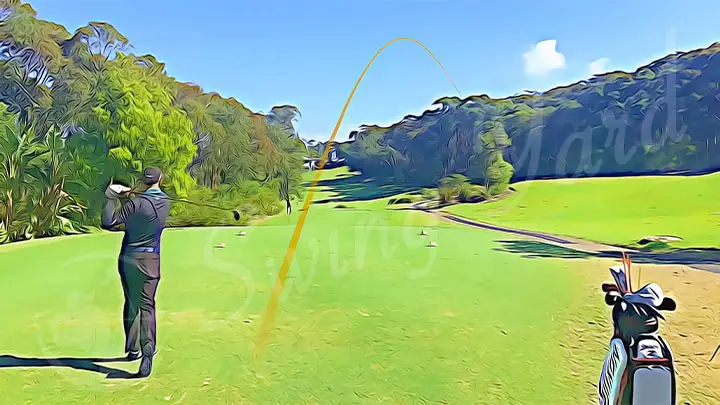

What Causes a Golf Slice?
Slicing in golf is usually caused by one or a combination of an over the top swing path, a ball position that is too far back, and/or a weak grip on the club.
Over the Top Golf Swing
The first (and most common) thing that causes a slice is your swing plane is over the top or “casting”. To define over the top, this is basically swinging from an outside to in swing path and “chopping” at the ball.
There are two main reasons you may be coming over the top…
Lack of Rotation
These types of swing planes are caused by people who cannot rotate their bodies much during the backswing, or simply don’t rotate at all. This is very common with elderly golfers who are riddled with arthritis, or those who have had upper body or back injuries.
(OR, just golfers who just simple don’t KNOW to rotate and/or don’t realize they aren’t doint it)
Props to Golf Digest for this photo below! It’s a really good example of the proper rotation with the hips and shoulders (golfer on the left) vs a non-rotation type of swing (golfer on the right):
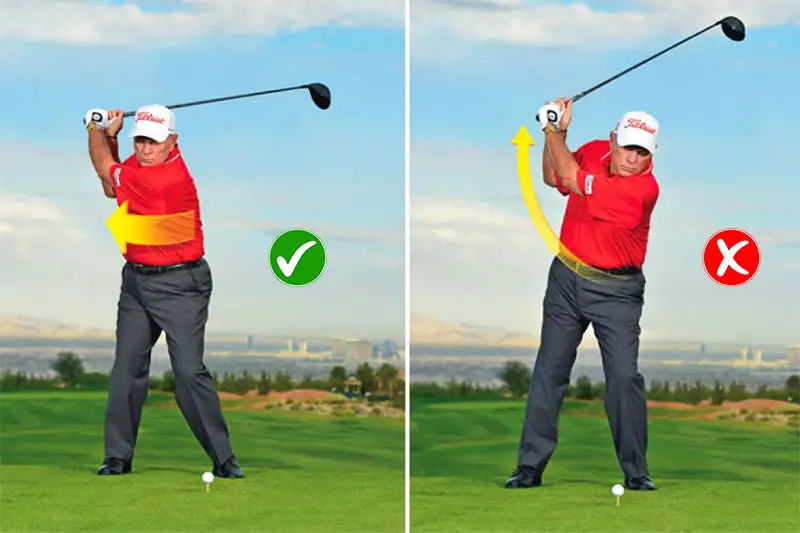

For these types of golfers who absolutely cannot rotate due to age or injury, instead of trying to fix the swing, the easiest fix for them is to learn to play the slice, but tone it down to a fade by squaring/closing the clubface upon release… more on that later.
Incorrect Body Position at Address
The position of your body at address could be another reason for slicing. If your feet are pointed down the target line, but your shoulders are open (towards the target), this will cause you to swing from the outside in… thus slicing the golf ball.
This can come from any one of these listed reasons… or a combination of some or all of them. If your swing is from the outside in and/or your club face is open at impact, that ball is going to slice!
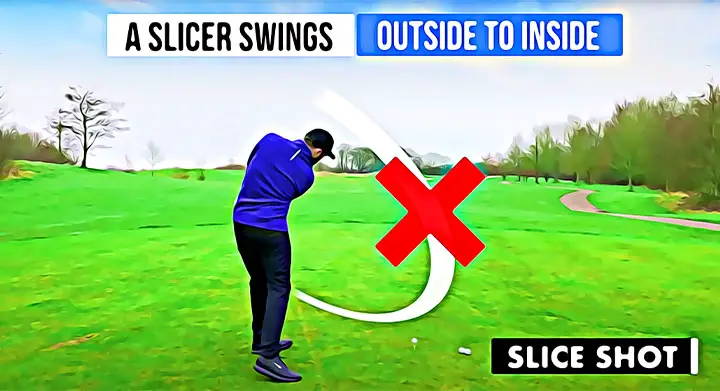

How bad the slice will be depends on how much you swipe the golf ball and create that slice spin, which is clockwise to a “righty” and counter-clockwise to a “lefty”.
Ball Position is Too Far Back
Another reason for hitting a slice is from the ball position in the set up. If your ball position is too far back towards the trail foot in the stance, the club head doesn’t have a chance to close before impact.
An open club face = left to right ball flight (see the image below for examples of the club face positions at impact)
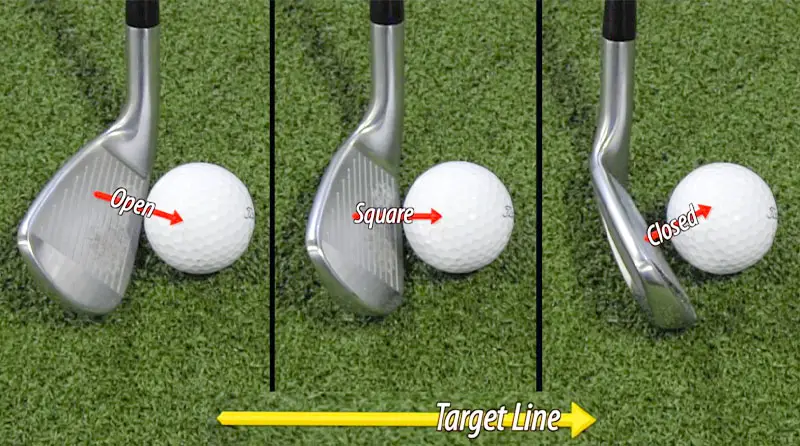

Weak Grip
The next reason could be from a weak grip on the club, and I don’t mean weak as in the grip pressure.
A weak grip means your left hand is rolled under the grip and your right hand rolled over. Basically, your hands are rolled more towards the target.
This type of weak grip promotes an open clubface and it’s MUCH harder to get the clubface square or closed at impact. And even if you do, it’s a very “wristy” non powerful swing that’s also hard to consistently control the timing of the clubface.
How to Fix a Slice in Golf?
Okay, so how do you actually fix your slice?! Well in theory, maybe we don’t want to completely eliminate it, but to tone it down to a controlled fade.
If you have a dog-leg right or slightly right turning golf course, and you can reach the corner, you would want to be able to hit that fade around the corner of the dogleg.
Another reason for wanting to hit a fade could be the wind direction.
So, most of the time we don’t want that banana ball, but maybe we do want a nice controlled baby fade. Now let’s look at what we need to do to put a stop to this!
Change your grip – Fix number 1
The first and easiest ‘how to fix a slice’ change is in your grip. Go to a stronger grip. Roll that lead hand over so at address you can see 2 to 3 knuckles.
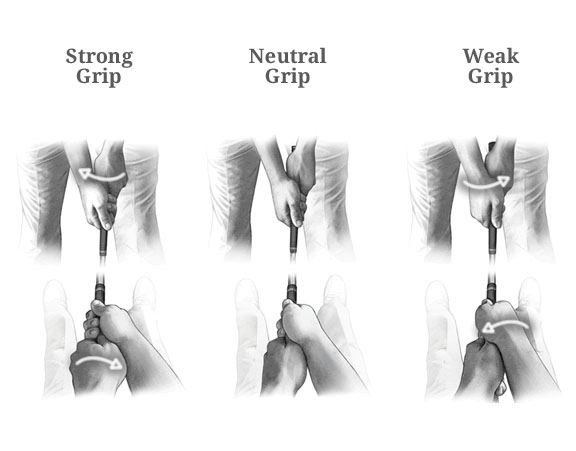

Try putting black magic marker dots on your gloves at the knuckle of the index finger, the middle/bird finger, and the ring finger. This is not really allowed in tournament golf but in general rounds or practice, it’s ok to do and I don’t think any of your golfing buddies are going to mind.
How to Stop Coming Over the Top – Fix Number 2
Ok, now we’ve tried changing our grip from weak to a normal or strong grip. If you’re still slicing the ball, now what?
The next step on how to fix a slice is to change your swing plane so you don’t “cast” or have the over the top swing path during your downswing. How do you do this? There are a couple of things you can do to help stop “casting”.
Here’s a drill for the range… try to hit the ball with a rolled up towel (or a head cover) under your trail arm… making sure to hold it there through impact and until it falls out naturally. Hit several shots like this before moving on to the next drill in your routine.
On the course, these two methods are not legal, but you can use your trail arm shirt sleeve stuffed under your arm, and again the same process happens. You want to hold it there through impact until it falls out naturally.
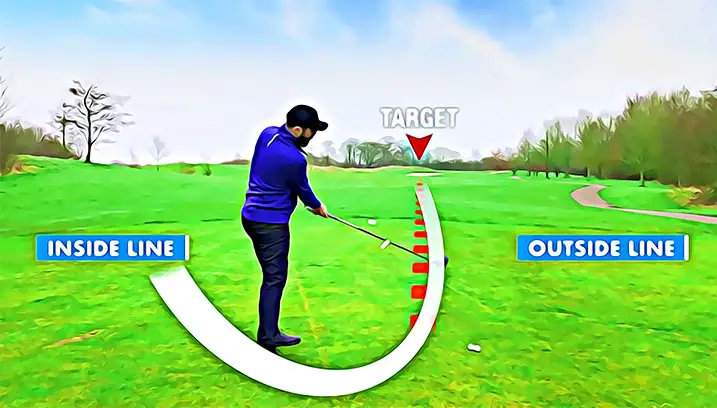

Another way of bringing your swing more to the inside is to step back with your trail foot about 3 to 6 inches at alignment. And when I say back, I literally mean straight back, NOT going to the right and making your stance wider.
This will also force you to begin the swing plane to the inside and thus starting the transition and downswing from the inside rather than the outside.
This guy explains it really well, and he has some good little drills on how to actually get the sensation of the club “falling down” behind you. Definitely check out this video if want to learn how to stop coming over the top:
Ball Position – Fix number 3
Ok so you’ve tried the first two way to fix your slice and even though they’ve worked to a certain extent, you still find yourself with that dreaded golf slice right?
This could simply be that your ball position is not correct. If you have your ball position too far back in your stance, no matter what you do, unless you’ve got your club face at impact square to the target, you’re still going to hit a slicel.
Why is this? Your club face is still open at impact because your hands are passing through long before the club face, thus you are closing the club face after impact.
- Driver – off your lead heel/toe
- Fairway Woods – about a club head width back from driver
- Long Irons – somewhere off the left collar bone
- Mid Irons – close to the center of the stance
- Short Irons / Wedges – center to slightly behind center, depending if you’re “old school” or “new school”
Each ball position in the stance depends on the club used and what kind of golf shot you want to hit.
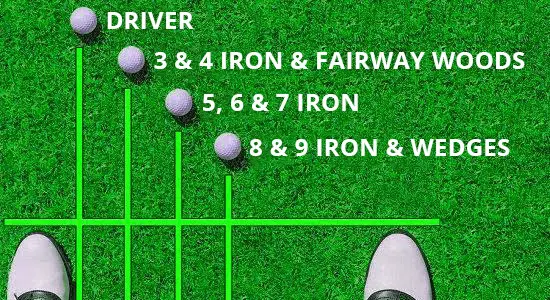

Upper Body Position – Fix number 4
So you’ve changed your grip, changed your lower body position, changed your feet, you have the inside out swing down, and you’ve figured out where to place your ball position for each club… and for the most part you’ve now straightened out your golf slice!
BUT, it still comes around from time to time!
This is the final part of the equation on how to fix a slice…
Now let’s work on your upper body position, mainly the shoulders. If your shoulders are open to the target line (meaning you’re toward the target), your swing path will come from across the target line, not from the inside.
In other words, you’re still going to be swinging from the outside, thus creating a right to left spin on your shot.
At address, be aware of where your shoulders are. The proper position should be straight down the target line or even better, closed to the target line! Meaning, your lead shoulder almost points to the RIGHT of the target.
How to Stop Slicing Driver
This section is for those who want advice/help specifically on how to stop slicing DRIVER.
Why am I Slicing My Driver?
Before I dive into HOW to correct a slice with a driver, let’s look at WHY do I slice my driver?… you may have been asking this one for quite some time now.
Among the other reasons causing the GENERAL SLICE (over the top swing path on the downswing, ball position is back, and weak grip), slicing driver is caused by a steep vs shallow swing path, a cupped lead wrist, and not enough shoulder turn.
These things, combined with the added length of the shaft, and the fact that most golfers try to swing extra hard with the driver, make it much more likely that the clubhead will lag behind the hands at impact, thus keeping the clubface OPEN.
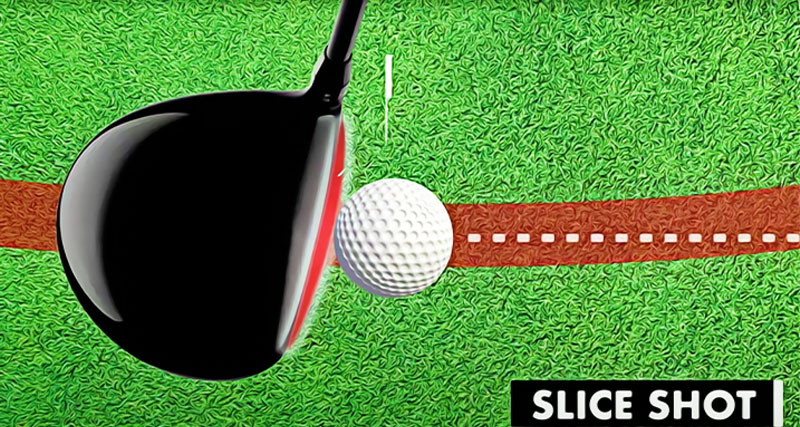

This image above shows how the driver looks if you make contact with an open club face.
How to Grip a Driver Not to Slice
The grip for the driver is, again, going to be either a neutral or strong grip… as long as it’s not ‘weak’, you should be ok.
The part that is different for the grip though, is to simply choke down on the driver (or up… it means the same thing for some reason). Basically, grip the handle an inch or two closer to the club head and AWAY from the very end of the handle. You can even go as far up as where the drip meets the shaft.
What this does, is it shortens the club a little bit. It’s just enough to allow you to have a greater chance to control the club face, release the club, and get it square (or even closed if you’re trying to draw) at impact.
Yes, even the pros do this one… see Tommy Fleetwood and Brooke Henderson below:
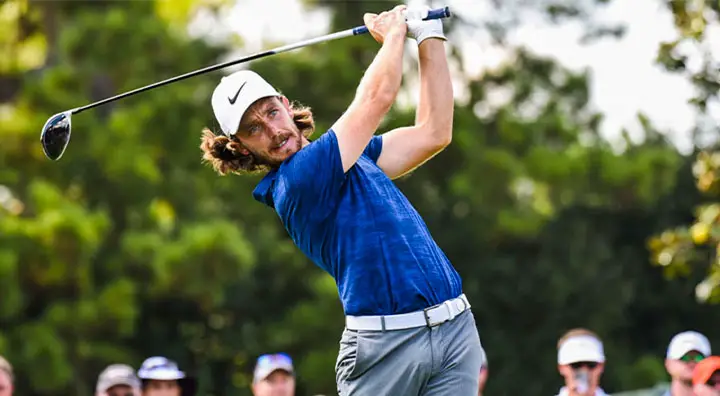

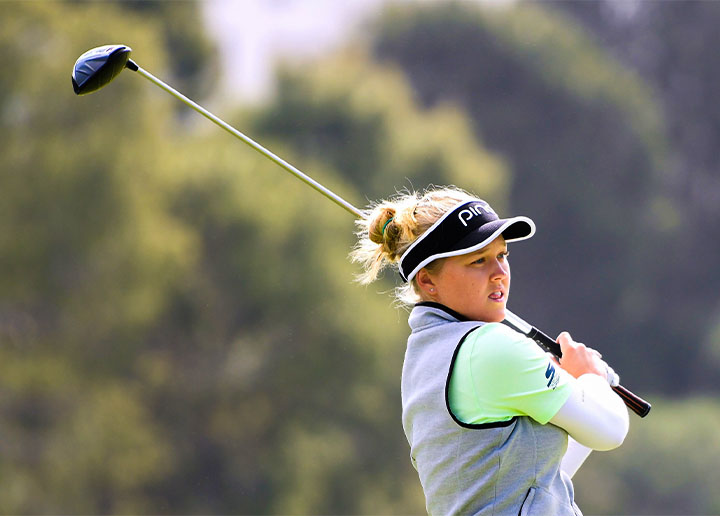

Work on it with the choked up grip position for a while, and slowly (over a few months) move it back maybe half an inch at a time.
Over the course of a season, you’ll be back to gripping the handle towards the end (side note – you should NEVER be gripping any club at the very end, always leave an inch on the end for better control)
How to Fix a Slice With a Driver
Correcting a slice with driver isn’t too hard to accomplish honestly, just work on the next 4 things and you’ll have it down in a couple weeks (maybe even sooner).
Everything We’ve Talked About So Far Still Applies
To stop the golf driver slice requires all of the above we just talked about… the proper grip, changing the swing path from the outside in, to the inside out, correct golf ball position, closing your shoulders to the target line, and one more thing we haven’t talked about yet…
The Shallow Golf Swing
Since it’s the longest club in the bag, the driver will require a more shallow golf swing. At the top of your backswing the position of your lead arm should be no higher than your trail shoulder.
If your backswing produces a high position above the shoulder, your chance to CAST the driver GREATLY INCREASES.
The shallow low swing gives you a MUCH better chance to come from the inside… this is the over the top golf swing fix!
If you still can’t seem to get that nice shallow golf swing with the driver, check this video out… this guy explains it well and has some good tips to really shallow out the driver swing specifically:
Flat Lead Wrist
Your lead wrist should be flat and not cupped at the top of the backswing.
To practice keeping the lead wrist flat, a credit card under your watch and glove will remind you if you bend your wrist at the top of the backswing.
Extra Shoulder Turn
One last thing… the driver calls for more of a shoulder turn going back than your fairway woods and irons.
Practice the lower positioned backswing and more shoulder rotation with your driver and your slices should be cured in no time!
Read my in-depth article on how to fix a slice with a driver specifically if you know its a weakness in your game.
Best Driver For Slice
If you want a driver that’s specifically designed to cure a slice, we have an entire article where I actually tested out and reviewed how the various ‘Draw’ and ‘Offset’ driver models performed in action. Check it out if you truly want to get the best driver to fix slice.
Some of the drivers reviewed include the TaylorMade SIM 2 Max D, the Ping G425 SFT, and the Cobra Radspeed XD.
How to Hit a Driver in General
If you’re looking for more general info on how to hit a driver (not just on fixing your slice), then we have a MASSIVE guide on that specifically. Check that out here.
Drills – Golf Slice Fix
Grip Fix Drill
With the grip, choose an older glove and put a dot on the knuckle of the index finger, the middle finger, and the ring finger. When you grip the club, make sure you can see either 2 or all 3 of these dots CLEARLY without moving your head.
Drills to Stop Coming Over the Top
- For swing path correction, practice slow swings from the inside out and place the trail foot slightly behind the lead foot to help facilitate bringing the club to the inside going back.
- You can even place an alignment rod straight up in the ground in front of you, and try to swing to the outside of the rod. Exaggerate it to the point where you still swing to the outside once the rod is removed.
- And of course we talked about the drill where you put a towel or head cover under your TRAIL arm (putting it under the lead arm is a different drill for another issue altogether).
Ball Position Drill
Learn where the golf ball position should be with each club in your bag.
To do this, swing the club and watch where the club head brushes the ground. This will give you the bottom of the arc of your swing and help with ball position.
Or, you can buy a specific alignment stick that has these positions marked on it.
Shoulder’s Closed Drill
Finally, practice closing the shoulders at address to also facilitate the inside out swing. A swing trainer whip, or swing trainer ring you can slide down the shaft of your golf club will greatly help with this one.
If you don’t want to spend a few dollars, then grab a couple of long irons/hybrids and swing these. Practicing the inside out swing, your body position, feet position, ect. This method will also help you learn the proper swing technique of starting both the backswing and transition from the ground up.
Final Thoughts – How to Stop a Slice in Golf
You’ve gotten this far, so I really do think you’re now armed with the knowledge to FIX YOUR SLICE once and for all!
But it’s going to take practice! Work through the drills I talked about above and try to get comfortable swinging from the inside. I’m sure you’ll be hitting many more fairways soon enough!
Cheers!
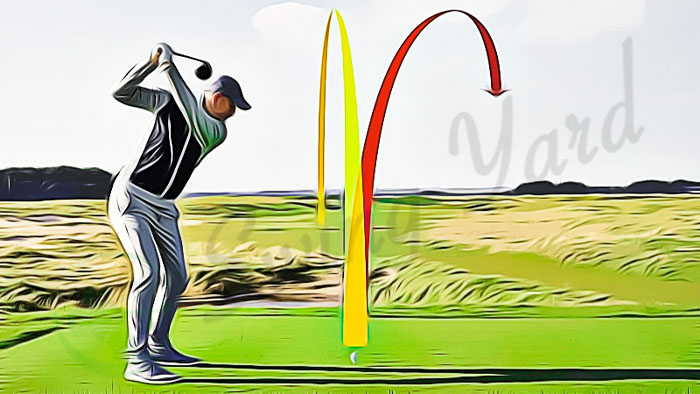

FAQ – How to Stop Slicing the Golf Ball
Note – Some of these FAQs were covered throughout the article, but I still get these questions a lot… so here are the “short and sweet” answers to the most common questions:
Is a Fade a Slice?
Yes, a fade is a slice, but a planned slice. However, it’s not nearly as severe as the slice. It travels the same left to right flight path for right hand golfers, and a right to left ball flight for left hand golfers.
What is a Slice vs a Hook?
A slice and a hook are basically the same except they follow different paths. To a right-handed golfer, a slice travels left to right and a hook from right to left. To a left-handed golfer, a slice travels from right to left and a hook from left to right.
How Do I Stop Slicing and Hit a Draw?
To stop slicing and hit a draw, you want to swing from the inside out. A slice occurs when you swing across the target line from outside in, you have a weak grip, your golf ball position is too far back in the stance, or your shoulders are open.
At address, close your shoulders to the target line, and go with a strong grip. Make sure to release the club through impact, meaning that your clubhead stays square or slightly closed to the target line.
Does a Strong Grip Fix a Slice?
Yes, a strong grip helps to prevent the slice. It won’t fix it completely. You’ll need to do a few other things in order to fix it completely.
Will a Weak Grip Cause a Slice?
A weak grip will not always cause the slice, but it could cause the fade naturally. The banana slice takes a few other factors to occur during set up and the swing.
Will a Stiff Shaft Fix My Slice?
Shaft stiffness has nothing to do with the slice. What causes a slice in golf is one of or a combination of all of the problems mentioned in this article. The most common cause of a golf slice is an over the top swing path or “casting” during the downswing.
How Do You Fix a Left Handed Driver Slice?
- Stop “casting” (having an “over the top swing path”, or swinging “out to in”)
- Strengthen your grip
- Move the golf ball position forwards toward the lead foot
- Closed shoulders at address
Can Ball Position Cause a Slice?
Yes, the ball position can cause a slice. Usually this occurs when the golf ball position is too far back towards the trail foot. This doesn’t allow you enough time to release the club or to square the club face to the target prior to impact. Try moving the golf ball a little bit forwards and see what happens!
Do Anti Slice Tees Work?
Sure, anti slice tees work a little bit. But they aren’t legal in the rules of golf. It’s really not that hard to fix a slice anyway. Check out the advice and drills in this article and you be able to hit the ball straight in no time!
Will a straight flying golf ball help?
So there are illegal balls that will not spin at all, and will absolutely go straight. I don’t recommend those, you’re just putting a band aid on the problem, plus they are against the rules. BUT, I do recommend playing with lower long game spinning balls when starting out. Check those out on our list of the best golf balls for hitting straight.
What is Over the Top Golf Swing?
An over the top golf swing is where you swing from outside in. It can occur from several things… lack of rotation in the backswing, an open body position at address, open shoulders at address, or simply taking the club back too high in the backswing.
How Do You Fix an Over the Top in Golf?
To fix an over the top swing path in golf, simply make sure you’re rotating your hips and shoulders during the swing, set up your body and shoulders CLOSED to the target line, and slightly move your rear foot backwards (straight back, NOT away from the target).
Another thing that helps is to have the feeling that you’re dropping the club on the ground behind you just before your downswing. This is one that REALLY helped me when I was learning.


